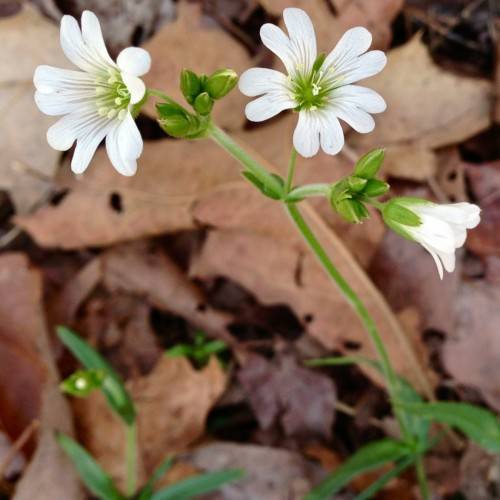
Céraiste Velouté
Cerastium velutinum var. velutinum
Watering:
Frequent
Hardiness Zone:
Sun:
full sun,part shade
Leaf:
Yes
Growth Rate:
Low
Drought Tolerant:
Yes
Salt Tolerant:
Yes
Invasive:
Yes
Care Level:
Medium
watering
This plant species should be watered once every 7-10 days, depending on the season and the environment in which it is planted. Generally speaking, during the summer, when days are longer and temperatures warmer, this plant species should be watered more frequently, however this should be done with caution as it is very capable of overwatering quite rapidly. During winter, temperatures will be cooler and days shorter, thus the need for water is lower. The amount of water should be adjusted accordingly to balance the needs of the Cerastium velutinum var. velutinum against its environment. For best results, aim to keep the soil of the Cerastium velutinum var. velutinum evenly moist but not sodden, and water until it reaches the base of the plant for the best results.
sunlight
Céraiste Velouté, or Cerastium velutinum var. velutinum, is a plant species that thrives best in bright, sunny conditions. To ensure success, it should be located in an area that receives direct sunlight for at least 4 hours per day. Since this species is a cool season perennial, it’s important to make sure that the plant is in a location that is not exposed to intense intense afternoon sun during the summer months. During the winter, however, more hours of sunlight is beneficial for growth and survival. When necessary, the plant can be grown partially shaded or under sunlight filtered through light clouds making sure that it receives 2 to 3 hours of direct sun throughout the day.
pruning
Cerastium velutinum var. velutinum should be pruned regularly throughout the growing season. Dead or damaged shoots should be removed as they occur. Pruning can also help to prevent the plant from becoming overgrown and leggy. In late spring or early summer, prune new growth back by 1-third for larger, fuller foliage. Pinch off the tips of any stems that are becoming too long or reaching out of the desired shape. Finally, in late summer, prune any remaining long or leggy stems and remove any remaining dead or damaged shoots.
